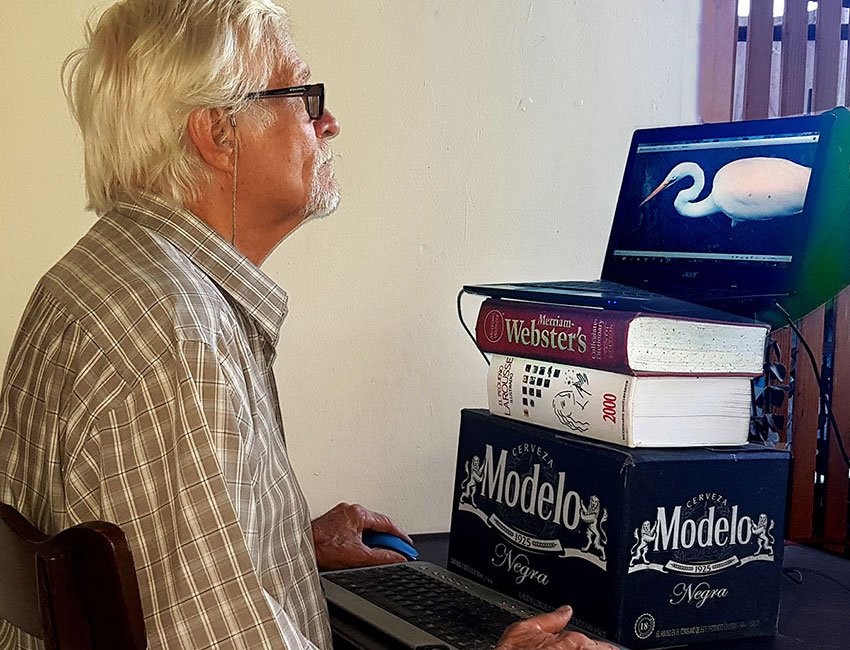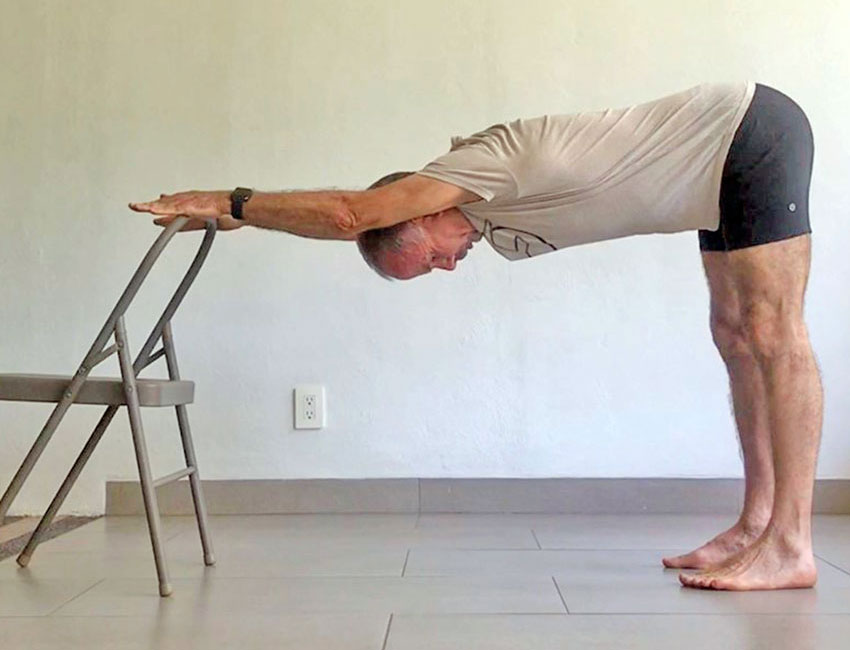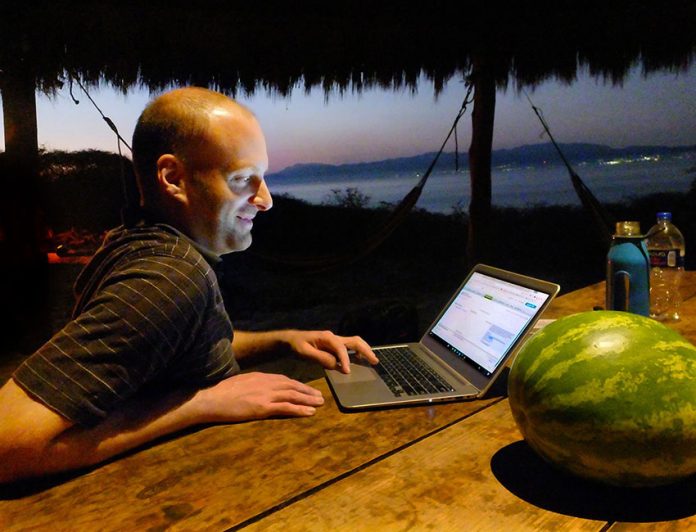In the year 2003, more than 9,200 non-government workers missed a day or more of work because of typing or keyboarding related injuries, according to the U.S. Bureau of Labor statistics.
In 2008, the situation was exacerbated as sales of laptop computers overtook those of desktops for the first time. Today, according to Guadalajara yoga master Paul King, things are getting much worse, as more and more people are turning their laptop into their principal workhorse while confined to their homes because of Covid-19.
“People are now working at laptops for long hours, although this is not what they were designed for. The ergonomics of a laptop are quite different from those of a desktop. In the former, the keyboard and screen are very close together and not easily separable. This means, even if you work at a table or desk, you are looking downward, rather than forward.
“Typically your lumbar is convex instead of its natural concavity, shoulders are rounded forward, your chest is collapsed, and the back of the neck is permanently extended. This posture spells potential long-term health problems for anyone who regularly works for hours on a laptop.”
King says you can improve this situation by investing in an external keyboard and raising the level of the laptop screen, for example by placing it on top of a stack of books, so you are looking straight at the screen. Your feet should be flat on the floor and both your forearms and your thighs should be parallel to the floor. Sit upright, weight in the center of your sitting bones, neither pressing the lumbar forward nor allowing it to collapse back. If this is difficult to maintain, maybe use a lumbar support.

“Of course this set-up works well for people who can touch type,” he comments, “but if you can’t and you still need to look down at the keyboard, the problem remains.”
What can happen to you if you work like this for a long time? “In the short term you may get a headache or feel stress in your neck and shoulders. If your upper back and neck muscles are contracted for a long time, and circulation to your heart is reduced by your collapsed chest, the flow of blood and oxygen to your whole body is reduced. As a result, you are not working at your optimum health and intellect level. In the long run you could end up with spinal problems.”
King says that modern people are losing the natural curvature of their neck. Looking down a lot causes the muscles in the back of the neck to elongate. If people spend a lot of the day in this position, the muscles lose their elasticity and computer users may get what is called a “flat neck,” with possible pain and compression of the disks.
So what can you do if you work at a keyboard all day? “I recommended that you take a break at least once an hour and do certain simple exercises,” says the yoga instructor. The only “prop” you need is a simple, straight-back chair.
1. Sit forward on the chair, reach behind you and grab the lower part of the chair’s back with both hands. Press down with the hands and lift the chest while rolling your shoulders back. Try to make your upper back concave. You can also look up to release the back of the neck.
2. The spinal twist: sit sideways on the chair with your feet and knees together and grab the upper part of the chair’s back with both hands, elbows wide apart. Now you can twist your trunk easily, using one hand to push and the other to pull. When you do this, turn the abdomen first, then the chest and finally the head. On each inhalation focus upon lengthening your spine upwards, and then continue the twist on each exhalation. “Twists are so beneficial for both the spine and the abdominal organs,” adds the yoga expert. “It’s always best to do each of them twice.”

3. Place your hands on the back of the chair and walk away so as to fully extend your arms and trunk parallel to the floor. Maintain this posture for a while, and with each exhalation lengthen the sides of the trunk more. This creates space between the vertebrae.
4. Finally, to correct the typically bad spinal position of people who have been sitting for a long time, you can, while seated, separate your feet and lean your chest forward between your knees. Place your fingers on the floor and let the weight of your trunk and head sink towards the floor. Breathe into your lower back and allow the spinal muscles to relax as the back lengthens and rounds. To go deeper you can clasp your hands behind your neck, until your head is lower than your knees.
The five chair exercises, King told me, will help correct problems of posture caused not only by laptops and desktops, but also by smartphones. Typing with both thumbs on a tiny keyboard close to the chest, he says, causes one to look down more sharply and to hunch the shoulders and upper back even more.
“This little workout,” concludes King, “will help you correct problems of posture and keep your spine mobile and healthy. Another thing that’s good to do is to rest your eyes by going outside and looking at distant objects.”
Paul King mentioned that all of the above exercises are in the spirit of B.K. S. Iyengar, founder of Iyengar Yoga, which is practiced by millions of students around the world. It is a form of yoga that emphasizes correct alignment and uses various props to make postures more accessible.
In 1952, Iyengar met and befriended the famous violinist Yehudi Menuhin. The story of this very unlikely meeting —which changed Menuhin’s life — is told in The Yoga Teacher and the Violinist. Menuhin eventually arranged for Iyengar to teach in London, Switzerland, Paris and elsewhere, resulting in the subsequent popularity of yoga in the West. In 2004, Iyengar was named one of the 100 most influential people in the world by Time magazine. He died in 2014 at the age of 95.
[soliloquy id="112353"]
One of Iyengar’s contributions to yoga was his application of exercises to health problems like chronic backache, high blood pressure and insomnia. Paul King says: “It’s never too late to start yoga.” His school, iYoga Studio, is located in Guadalajara.
If you find this short workout helpful, and especially if you experience shoulder-neck pain, you may also be interested in Five More Exercises to Protect you from Laptop Revenge.
The writer has lived near Guadalajara, Jalisco, for more than 30 years and is the author of A Guide to West Mexico’s Guachimontones and Surrounding Area and co-author of Outdoors in Western Mexico. More of his writing can be found on his website.
